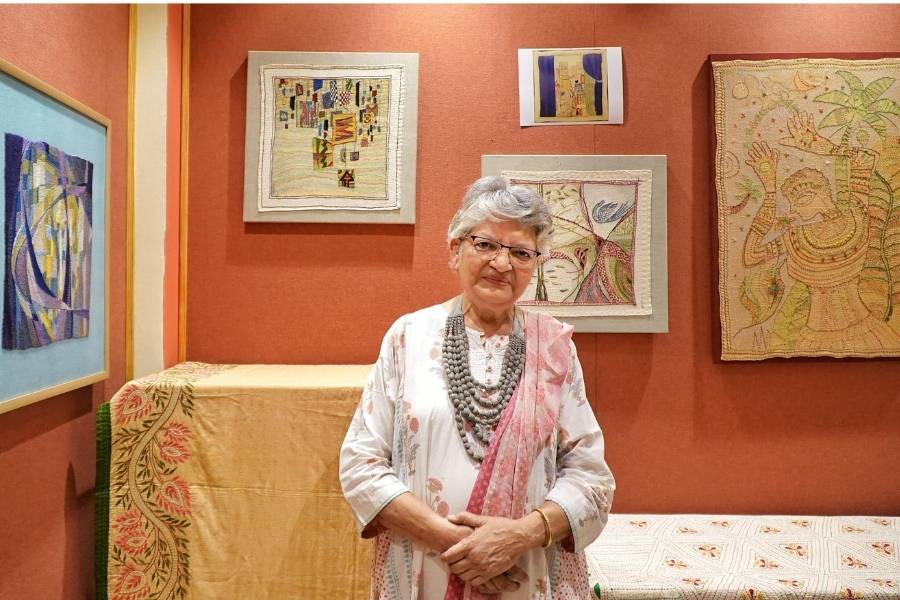Recently, an exhibition at a south Kolkata college left visitors enthralled, as they witnessed art in the form of the kantha stitch. Each frame was a masterpiece woven in threads. The creator of this kantha art, 80-year-old Anita Roy Mitra, patiently interacted with the eager crowd. Curious and wowed, My Kolkata reached out to know about her journey and the skill she has nurtured through the years.
A childhood set amidst art
Born in Kolkata in 1945, Anita’s roots go back to Karnapur village in Khulna. At the age of nine, she was admitted to Patha Bhawan in Santiniketan, where she was introduced to the artistic ethos of Rabindranath Tagore’s institute. She later pursued a diploma in fine arts at the Government Art College in Kolkata.
Anita had an inclination for art since childhood, but she had no formal training in kantha stitching. However, her mother’s meticulous embroidery skills left an impression on her. “From childhood, I saw my mom making kanthas — but just recycling materials and plain kanthas — just as we use at home for babies. She had a knack for embroidery and asked me to draw outlines for her to stitch,” Anita recalled.
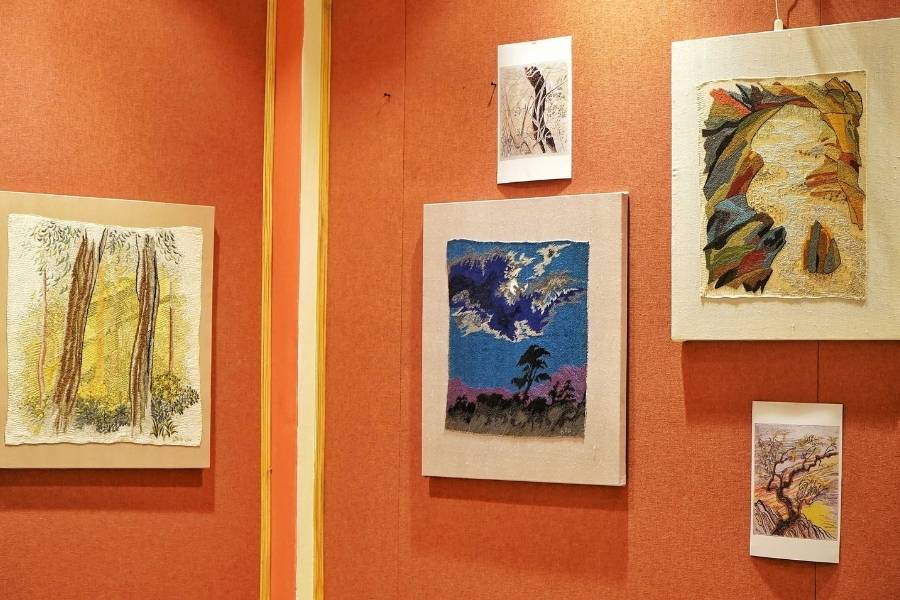
The artist believes kantha stitching is a form of expression
The birth of a passion
In 1983, when Anita was expecting her son, her mother encouraged her to make kanthas. This suggestion sparked a curiosity, leading her to question: ‘What actually is kantha?’ She began visiting museums, reading research books, and analysing old kantha pieces to understand the stitches and their meanings.
“I always felt each sketch has something to offer on the cloth. It is not just drawing and filling up. So, when my mother made this proposal, the artist in me thought that if I should go for kantha, I have to know about it, get to the root of it,” she explained.
This quest coincided with the commercialisation of kantha-stitch saris in the 1980s, a trend that troubled her deeply. “These saris were just a single layer of cloth filled with running stitches. That is not kantha, yet they were given the name Kantha sari. It took over the market so fast that people slowly forgot about real kantha,” she lamented.
Determined to revive its essence, Anita began experimenting with stitches, creating small sample pieces, and developing her unique style, rooted in the influence of Madhubani paintings.
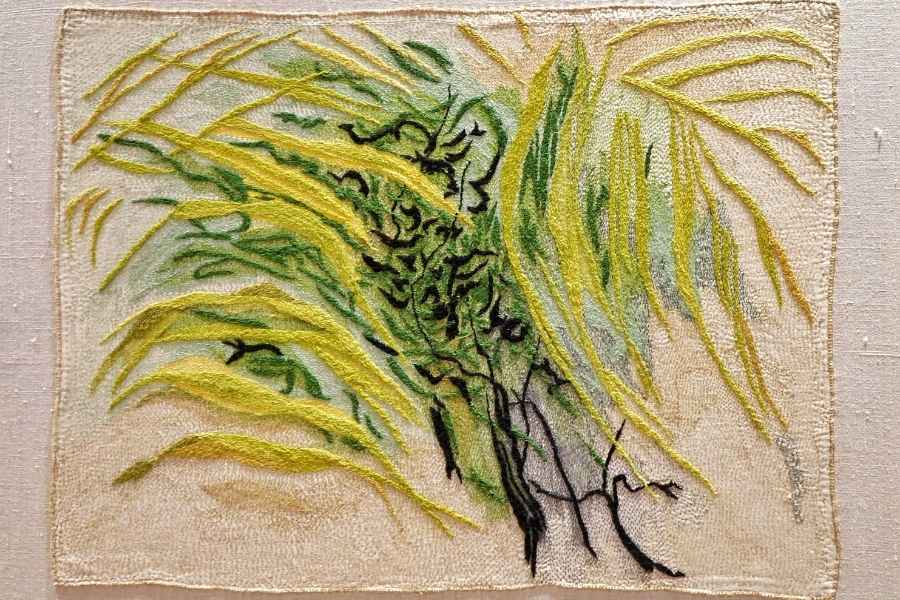
The artist draws inspiration from nature
Teaching and reviving traditions
By 1988, Anita made it a mission to explore kantha beyond her own work. Once again, encouraged by her mother, she started teaching local girls traditional kantha techniques. “The real revival of kantha had to start with developing the skill. So, I trained them with the condition that they had to prove their skill. The creativity can be their own, but the skill of the stitches should be mastered,” she said.
She guided her students by first designing the patterns and colours herself, allowing them to stitch under strict instructions. Her dedication to preserve this traditional craft of Bengal led to her first kantha exhibitions in Mumbai and Kolkata in 1999.
And then personal responsibilities intervened. After losing her father, Anita focused on caring for her ailing mother. During this time, she continued teaching art at home.
Turning to a new chapter
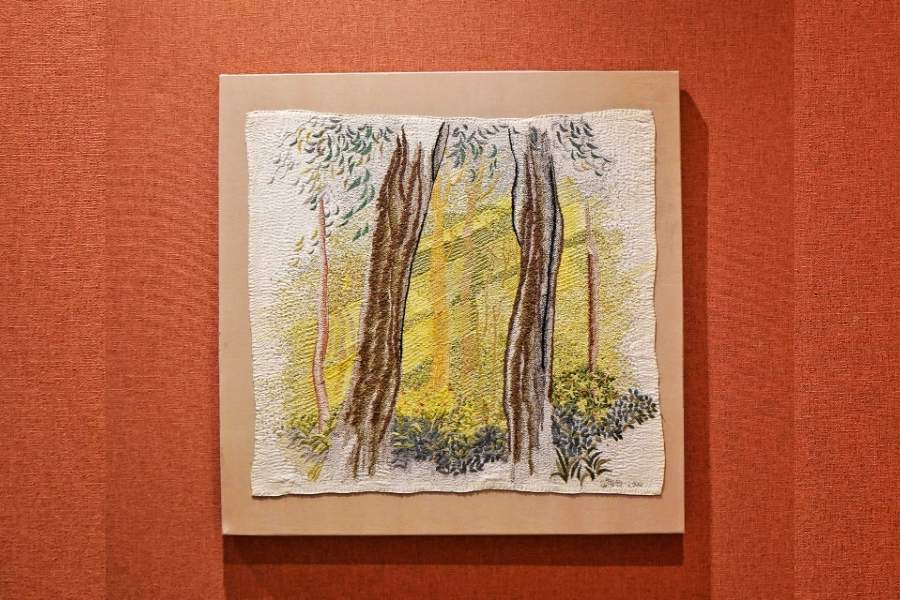
Since November last year, Anita has been working on new experiments with kantha, to reach the depths of the art beyond traditional boundaries
Anita recently rediscovered her love for kantha after visiting an exhibition of Tagore’s paintings. “That inspired me so much, that I wanted to start again, with a fresh beginning, a second phase of my kantha research and work,” she said.
Since November last year, she has been working on new experiments with kantha, to reach the depths of the art beyond traditional boundaries. She stands by her belief that kantha is an art form and not just craft.
“The argument between artists and intellectuals has always been whether kantha is art or craft. I say it cannot be defined. Every form of art, music, film and painting has its way of unfolding. Kantha, too, is a slow process, but that does not make it any less of an art form,” she asserted.
For Anita, kantha is deeply emotional and personal. “My pictures are mostly from my emotional moments — a sudden rush of water in the river, turmoil in the air, the silver lining in the sky. Every work matters to me,” she shared.
A journey to create a legacy
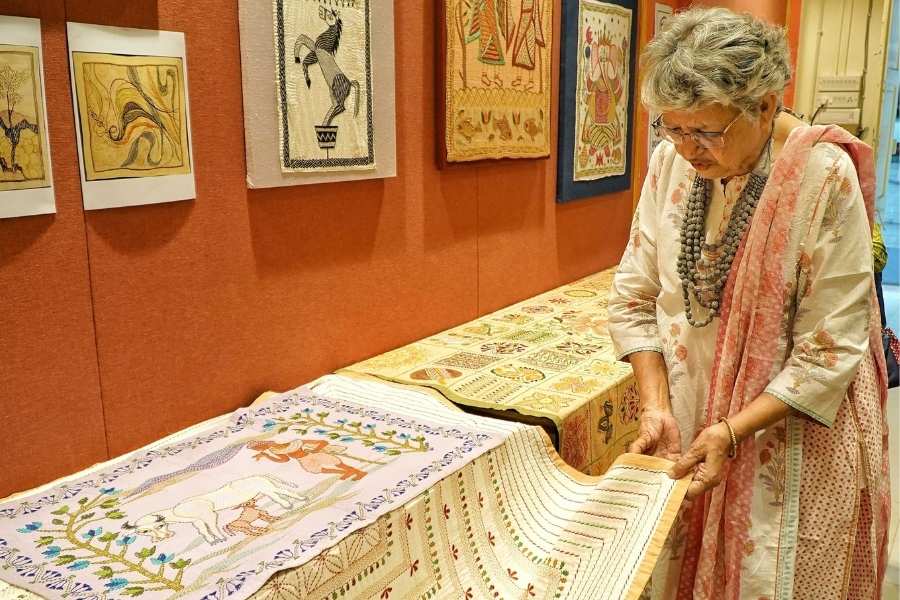
‘Kantha is our pride, a tradition, and it should be preserved,’ says Anita
Over the years, Anita has dedicated herself to not just creating art, but also teaching. “A lot of ladies and students have asked me to teach them. So, I am thinking of setting up a workshop. Kantha is our pride, a tradition, and it should be preserved,” Anita said.
Despite her age, Anita remains as passionate and curious as ever. “At 80, I still feel the urge to experiment. Art is meant for life, not just to hang in galleries. If my work inspires someone to start their creative process, I have hit the nail right there,” she said with a smile.
